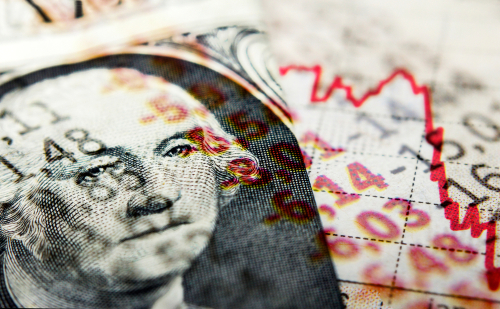
 The Bureau of Labor Statistic’s Consumer Price Index rose by 8.5 percent year-over-year ending March 2022, leading most economists to agree that inflation is going to be with us for a while. With inflation seeming not to abate, at least in the near term, how will different types of investments react to inflation that is sustained and unknown when it will peak and begin to drop. Looking at a 2004 study from the Federal Reserve, an unexpected 25-basis point rate cut can be expected to see equities appreciate by one percent.
The Bureau of Labor Statistic’s Consumer Price Index rose by 8.5 percent year-over-year ending March 2022, leading most economists to agree that inflation is going to be with us for a while. With inflation seeming not to abate, at least in the near term, how will different types of investments react to inflation that is sustained and unknown when it will peak and begin to drop. Looking at a 2004 study from the Federal Reserve, an unexpected 25-basis point rate cut can be expected to see equities appreciate by one percent.
Defining Different Rates
The Federal Open Market Committee (FOMC) sets the federal funds rate – the overnight rate at which banks borrow from each other. This undoubtedly will impact the economy and the domestic and global stock markets. While it can take months, if not more than a year, for a change in interest rates to have a universal impact, the stock markets see the impact sooner. This is opposed to the discount rate, which is the interest rate banks are charged when loans come from regional Federal Reserve Banks – the so called discount window.
One main reason the Fed adjusts the federal funds rate is to shape inflation. When the federal funds rate is raised, it is trying to reduce the money supply available for consumers and businesses. With less money available to circulate throughout the economy, it costs more to borrow money as interest rates rise.
Another important reason to keep an eye on the federal funds rate is due to the fact that the prime interest rate is based largely on the federal funds rate. Whether a mortgage, credit card or other personal or commercial loan, the prime interest rate is an influential factor in these lending vehicles’ interest rates. As the Fed Board of Governors explains, the prime rate is how each individual bank determines its own interest rates. Their unique prime rate is based on the target level of the federal funds rate, which is how much other banks charge them for short-term loans. Once the prime rate is established, it is used as a reference base rate for a multitude of lending products, including personal and commercial loans and credit card lines.
FOMC and Federal Funds Rate Adjustments
As the Federal Reserve increases its discount rate, short-term borrowing costs for financial institutions increase. Financial institutions in-turn are pushed to increase borrowing costs for companies and consumers. Whether it is a credit card or a mortgage, rates increase. The higher the interest rate, the less spending ability the account holder has. The account holder also sees higher bills via the higher interest rates. The higher the bills, the less money they can spend elsewhere, often impacting the economy.
Rising Rates and the Markets
Publicly traded companies can suffer in different ways. A company may bring in less revenue or have higher borrowing costs, cutting into its growth forecast or reducing its profits. Companies also may see lower growth expectations and a decline in future cash flow projections. Assuming no other changes, the stock price will likely fall. Depending on how severe the increase in interest rates, this can impact entire sectors – and depending on how much weight a particular company comprises within an index, an entire index.
Bond Market Dynamics and Interest Rate Fluctuations
Compared to corporate bonds, where bondholders are first in line to be paid if a company goes bankrupt, government securities, such as Treasury bills and bonds, are viewed as more likely to pay their investors back even in more challenging financial circumstances. This is because, according to the U.S. Securities and Exchange Commission, they are backed by the full faith and credit of the U.S. government.
As the Financial Industry Regulatory Authority (FINRA) gives an example, interest rates have a noticeable impact on bonds. Say a bond is sold for X and matures in Y years down the road with a Z percent coupon at par value. Twelve months later, interest rates have risen and another of the same type and amount of bond is issued at the same par value but is issued with a one or two percent higher coupon rate. Based on these two different bonds’ characteristics, the original bond is less attractive on the open market. If the original bondholder wants to sell a bond issued a year ago, he will have to sell for less than face value due to the more attractive interest rate of the newly issued bond.
While there is much uncertainty in the financial markets, including the FOMC and the bond and equity markets, understanding how past market moves have occurred can offer guidance to how increasing interest rate environments may evolve in this rate-tightening environment.

